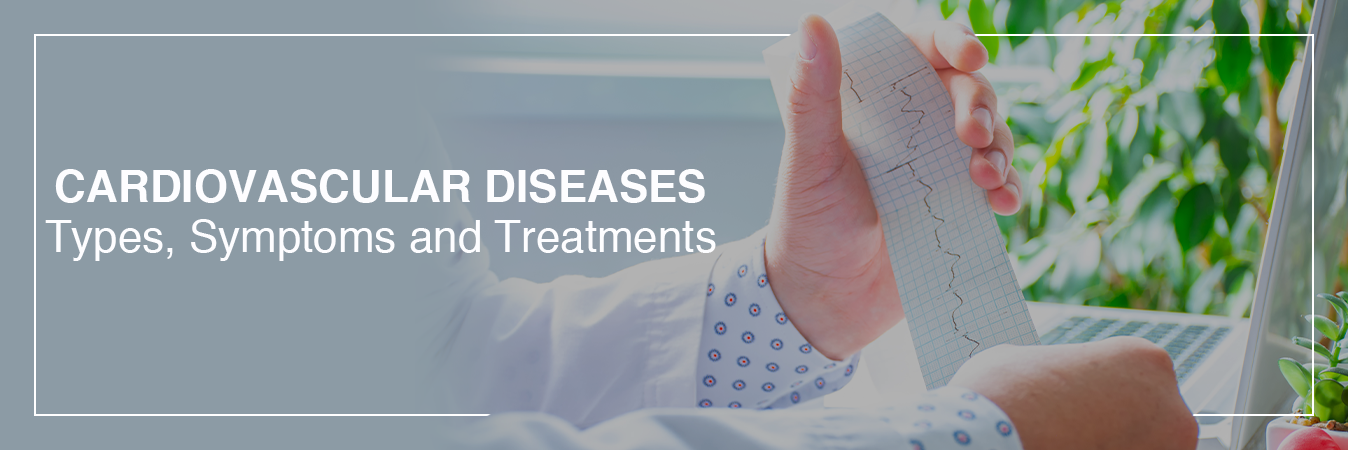Cardiovascular diseases
Cardiovascular disease (also known as heart and circulatory disease) refers to a class of disease involving congested or blocked blood vessels that can lead to a heart attack, chest pain (angina) or stroke. Further, some heart conditions which affect your heart’s muscles, valves or rhythm are also considered forms of heart disease.
According to the World Health Organization (WHO), cardiovascular diseases are the leading cause of deaths globally.
Types of Cardiovascular diseases:
Cardiovascular diseases involving the blood vessels are known as vascular diseases. Some of them are as below:
Coronary artery disease, also known as coronary heart disease and ischemic heart disease
Peripheral arterial disease – Disease of blood vessels that supply blood to the arms and legs
Cerebrovascular disease – Disease of blood vessels that supply blood to the brain (includes stroke)
There are also many cardiovascular diseases that involve the heart.
Cardiomyopathy – Diseases of cardiac muscle
Hypertensive heart disease – Diseases of the heart secondary to high blood pressure or hypertension
Heart failure – a clinical syndrome caused by the inability of the heart to supply enough blood to the tissues to meet their metabolic requirements
Pulmonary heart disease – A failure at the right side of the heart with respiratory system involvement
Cardiac dysrhythmias – abnormalities of heart rhythm
Inflammatory heart disease that includes
Endocarditis – inflammation of the inner layer of the heart, the endocardium. The structures most commonly involved are the heart valves.
Inflammatory cardiomegaly
Myocarditis – inflammation of the myocardium, the muscular part of the heart, caused most often by viral infection and less often by bacterial infections, certain medications, toxins, and autoimmune disorders. It is characterized in part by infiltration of the heart by lymphocyte and monocyte types of white blood cells.
Eosinophilic myocarditis – inflammation of the myocardium caused by pathologically activated eosinophilic white blood cells. This disorder differs from myocarditis in its causes and treatments.
Valvular heart disease
Congenital heart disease – heart structure malformations existing at birth
Rheumatic heart disease – heart muscles and valves damage due to rheumatic fever caused by Streptococcus pyogenes a group A streptococcal infection.
Depending on different types of cardiovascular disease symptoms will vary for a patient. However, typical symptoms may include:
- Pressure or pain in the chest
- Pain or discomfort in the arms, the left shoulder, elbows, jaw, or back
- Shortness of breath
- Nausea and fatigue
- Light-headed or faint
- Cold sweat
The treatment too, depends on the type of condition the person has. For instance, if you have a heart infection, you’ll likely be given antibiotics. In general, the treatment may include the following.
Lifestyle adaptations, such as weight control, workout, abandoning smoking and dietary changes;
medications to control blood pressure, diabetes or cholesterol;
Specific procedures or surgery, depending on the type of heart disease and the extent of the damage; cardiac rehabilitation, comprising exercise and counselling.
The treatment aims to relieve symptoms, decrease the risk of the condition worsening or recurring, avoid complications. Depending on the condition, it might further aim to stabilize heart rhythms, reduce blockages, and widen the arteries enabling a better flow of blood.


